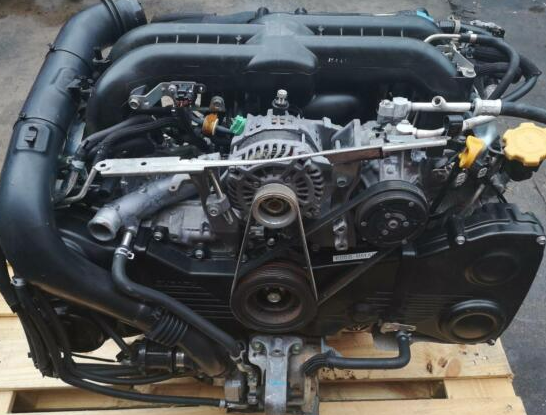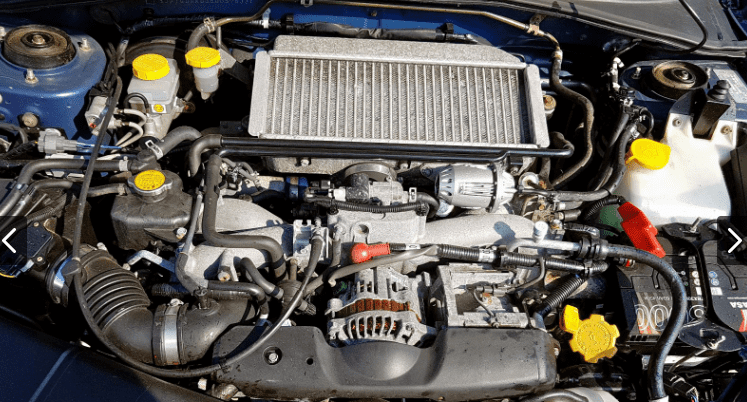The Subaru EJ engine is a series of four-stroke automotive engines produced by Subaru. It was introduced in 1989 as a replacement for the Subaru EA engine. The Subaru EJ engine has an open deck block, aluminum cylinder heads, and Dual active valve control system. The EJ engine is designed to provide good gas mileage, torque, and horsepower.
STI variant of the EJ25
The STI variant of the EJ25 engine is used in both WRX STI models. The turbocharged 2.5-liter flat-four is eager to rev and pumps out the typical flat-four burble. However, it’s not as smooth as smaller turbo fours and lacks low-end grunt. As a result, the Subaru WRX STI is not suitable for everyday driving, though enthusiasts will enjoy the spirited performance. It also lacks the comfort of a smooth ride on rougher pavement. Its gearbox is manual and requires work, so owners should be prepared to perform clutch drops and high-rpm shifts.

The STI variant of the EJ25 engine also comes with improved valvetrain and dual-AVCS. This engine is the most powerful factory-tuned EJ257 engine ever built. As of 2019, the STI variant of the EJ25 engine is available in the WRX STI.
Open-deck block
In order to get the best performance from your Open-deck block EJ20 engine, you must choose the right kind of cylinder for it. You can choose between a fully closed or open-deck cylinder, and both types have their advantages. While an open-deck cylinder is free-standing and prone to vibration, a closed-deck cylinder is more durable. It also prevents cracks in the cylinder liners.

Open-deck engine blocks are a great choice for natural aspirated builds, but they are not suitable for boosted and nitrous-boosted builds. The cylinder pressure is much higher on an open-deck engine. This translates into more power. Fortunately, the open-deck design is easy to manufacture.
The downside to an Open-deck Block EJ20 engine is the increased cylinder flex caused by increased boost. Combined with the increased side loads, this can damage cylinder walls and lead to premature block failure. However, many companies have already developed conversions to close the deck of an EJ205, and the engines they produce have been durable and reliable. Some companies have also tried to reinforce the deck with a billet aluminum block guard. However, this resulted in distortion on the top of the cylinder, and this causes poor ring seal.
Aluminum cylinder heads
When you’re considering the purchase of new aluminum cylinder heads for your EJ20 engine, you’re going to have to consider a few factors. For one, aluminum heads have tremendous airflow potential, so it makes sense to go for them when possible. AFR, for example, offers a variety of aluminum heads for this type of engine, including oval port heads, which feature smaller combustion chambers than rectangular port heads. These heads also work well with stock low-compression pistons, and they have superior heat transfer characteristics.
While Gen V and Gen IV cylinder heads are interchangeable, they are not designed to be used on each other. This is because the water jacket cooling passages are different. However, most aftermarket aluminum heads have a universal water passage design, which means they can be used on either Gen V or Mark IV engines.
AFR cylinder heads are available for a variety of engine combinations, from stock short-block engines used in tow trucks to 600-cubic-inch race-only vehicles. You can find the right one for your needs. You can choose from the following models:
Dual active valve control system
Subaru has introduced an active valve control system (AVCS) in the EJ20X and EJ20Y engines. The system provides variable intake and exhaust valve timing. AVCS allows the engine to rev at different rates and maintain optimal power levels. This technology improves combustion efficiency and reduces emissions.
The new engine meets Step 4 emission regulations and delivers lower fuel consumption. It also features Electronic Throttle Control, which eliminates the traditional mechanical connection between the accelerator pedal and throttle, and offers instant throttle response, smoother control, and better fuel economy. The engine also features Dual Active Valve Control System (DAVCS), which utilises variable valve timing mechanisms to optimize charging efficiency and ensure clean combustion throughout the rev range. It also enhances fuel economy and the environment.
The DAVCS can be used with a Haltech ECU to replace the original exhaust valve control system. This system can also be used on EJ20G and EJ20K engines that use a conventional narrow band O2 sensor located on top of the turbo downpipe. The OEM ECU uses this sensor to determine the correct timing for the exhaust gases. Due to the limited range of this sensor, its accuracy becomes problematic on modified engines. Therefore, the Haltech WB1 kit is recommended to ensure proper operation. The kit includes 4.9 sensors to replace the pre-cat sensors on early mode. A 22mm socket is needed to swap out the sensors.
